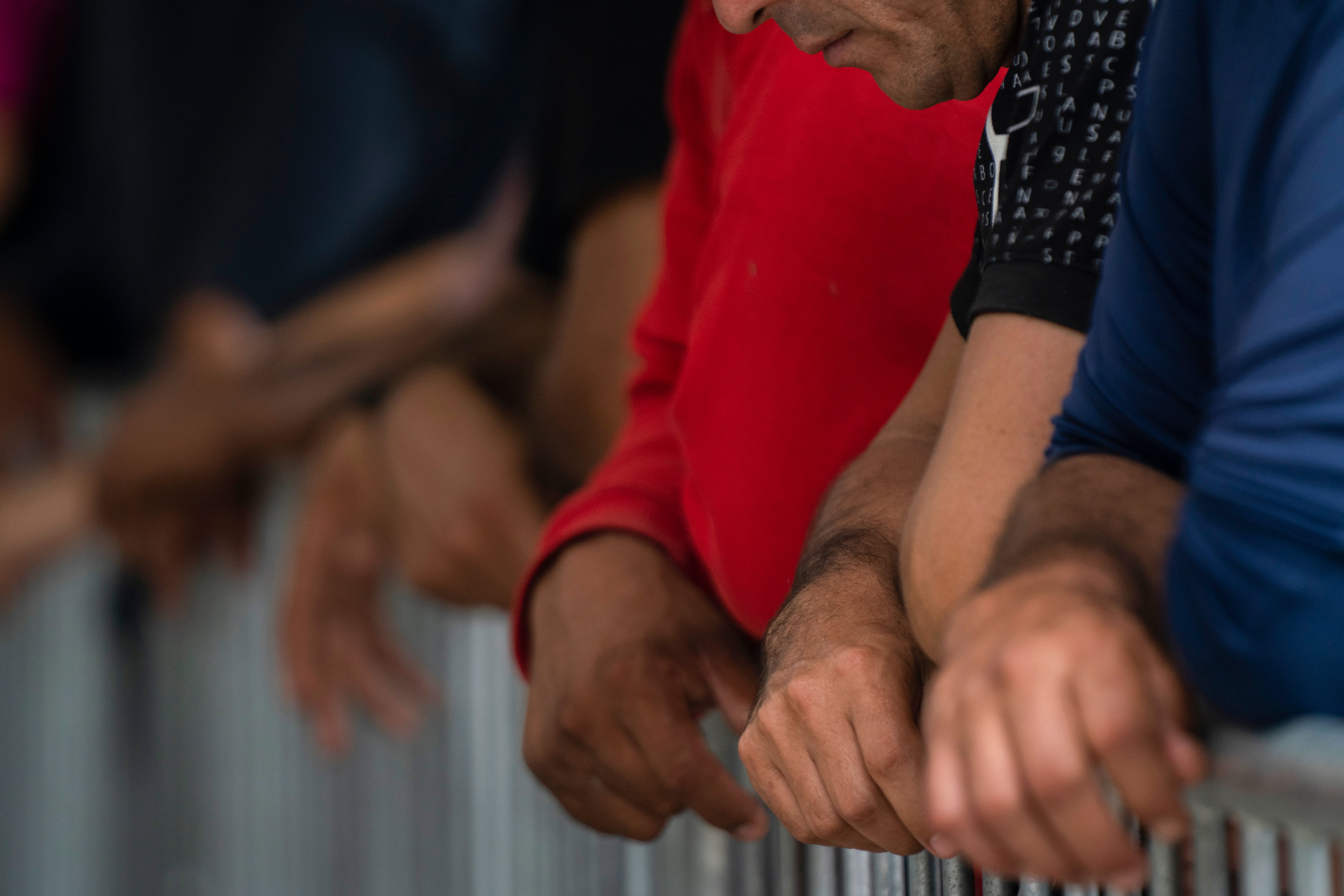About 550 U.S. active duty troops have begun arriving along the U.S.-Mexico border in the first group of military support ahead of an expected increase of migrants, U.S. defense officials said Tuesday.
The movement of troops is part of efforts to beef up security along the southern border as the U.S. prepares for the end of immigration restrictions linked to the coronavirus pandemic. Those restrictions are set to expire Thursday, leading to concerns about whether that will result in an increase in migrants trying to enter the U.S. starting Friday.
The forces will mainly be used to help monitor and watch the border, or do data entry and support, and are “not there in any way to be interacting with migrants,” said Brig. Gen. Pat Ryder, Pentagon press secretary. The goal is to free up U.S. Customs and Border Protection personnel to do law enforcement activities.
“They needed assistance performing some of those back shop type requirements so that they can focus on the law enforcement aspect of this,” Ryder said.
At least some of the active duty troops will be used near El Paso, Texas, he said, while adding that CBP will decide where forces will go.
More than 900 additional soldiers, Marines and airmen will follow around the end of May. The initial plan calls for a temporary 90-day deployment of the active duty forces, because they can be moved much more quickly to the border than National Guard or Reserve troops.
U.S. and international law give migrants the right to seek asylum. However, the U.S. has used Title 42 of a public health law to expel migrants with no chance at asylum 2.8 million times since March 2020 on the grounds of preventing the spread of COVID-19.
The Biden administration has said that it is ready to deal with whatever happens after Title 42′s use ends, although it has also repeatedly criticized Congress for not making changes to the country’s immigration system.
“We believe we have a robust process to deal with what is going to occur after Title 42 lifts. Again, we’re using the tools that are available to us because Congress refuses to do their job as it relates to the border,” White House press secretary Karine Jean-Pierre said Tuesday.
Roughly 2,500 National Guard members are already spread across all sectors of the border, providing an array of support to CBP, including monitoring, detection and air transportation.
Separately, Texas National Guard troops are also working along the border under state authority. Ryder said the active duty troops will be doing an entirely separate mission.
Even with the COVID-19 asylum restrictions still in place, the administration has seen record numbers of people crossing the border. President Joe Biden has responded by cracking down on those who cross illegally and by creating new pathways meant to offer alternatives to a dangerous and often deadly journey.
Some locations across the border are already seeing an influx of migrants, often spurred by false information from smugglers or widespread rumors about what the Title 42 changes will mean for their chances of being able to remain in the U.S.
Agents in the Border Patrol’s relatively quiet El Centro, California, sector stopped about 260 migrants a day over a four or five day period through Sunday, up from about 90 a day the previous week, said Gregory Bovino, the sector chief.
It’s unclear what’s driving the increase other than anticipation that pandemic restrictions are about to end, Bovino said in an interview.
“We see these surges whenever there’s a major event or a news story,” he said. “We don’t have a crystal ball, so I can’t say there’s going to be a massive surge on Friday.”
Top nationalities crossing illegally in the El Centro sector are from Peru, Colombia and Senegal, Bovino said. On Monday, agents found migrants from 22 countries.
Also Tuesday, Mexican President Andrés Manuel López Obrador and President Joe Biden spoke by telephone. Since Mexico shares a roughly 2,000-mile (3,200-kilometer) border with the United States, it’s key to the success of any plans by the United States to control immigration at the southern border. The Mexican president said the two spoke for over an hour.
“We reaffirmed the commitment to continue working together on issues like migration with a humanistic perspective, drug and weapons trafficking, and above all, cooperation on the welfare of the poorest people on our continent,” he said.
Associated Press reporters Elliot Spagat in Imperial, California and Mark Stevenson in Mexico City contributed to this report.



